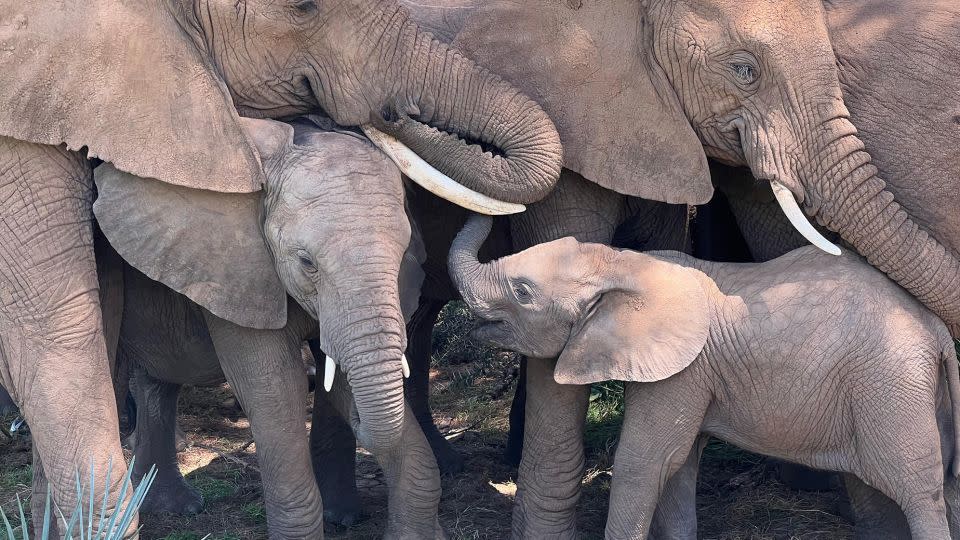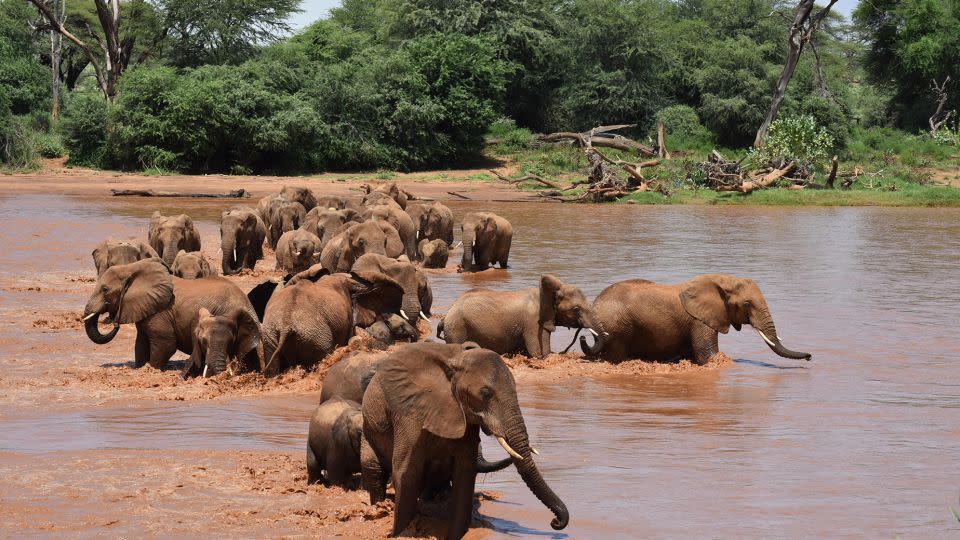A new study finds that wild African elephants can address each other using individualized calls that resemble the personal names used by humans.
While it is known that dolphins call each other by imitating the distinctive whistle of the dolphin they want to address, and that parrots call each other in a similar way, African elephants in Kenya can go a step further in identifying each other.
These elephants learn, recognize and use individualized, name-like calls to address others in their species, apparently without using imitation, according to the study published Monday in the journal Nature Ecology and Evolution.
The most common type of elephant call is rumbling, of which there are three subcategories. So-called contact rumbling is used to call another elephant that is far away or out of sight. Greeting sounds are used when another elephant is within reach. According to the study, sounds made by caregivers are used by adolescent or adult females toward a calf she is caring for.
The researchers looked at these three types of rumbling, using a machine learning model to analyze recordings of 469 calls made by wild groups of females and calves in Amboseli National Park and Samburu and Buffalo Springs National Reserves between 1986 and 2022. All elephants could be identified individually identified by the shape of their ears, as they have been continuously monitored for decades, according to the study.
The idea was that “if the calls contained something like a name, you should be able to figure out who the call was directed to just from the acoustic characteristics of the call itself,” said lead study author Mickey Pardo, an animal behaviorist and researcher . postdoctoral researcher at Cornell University in New York.
The researchers found that the acoustic structure of calls varied depending on who the target of the call was.
The machine learning model correctly identified the recipient of 27.5% of the calls analyzed, “which may not sound like much, but it was significantly more than what the model could do if we had just fed it random data.” Pardo told CNN.
“So that suggests there is something in the calls that allows the model to identify who the intended recipient of the call was,” he added.

The researchers also found that the elephants were probably not just imitating the voice of the person they were addressing. Comparing pairs of calls between callers and receivers, as well as the receivers’ calls to other individuals, they found that the majority of caller calls sounded no more like the receiver’s call than when they addressed other individuals. the study.
The researchers then played the calls to 17 elephants to see if they recognized and responded to the calls originally addressed to them.
They found that the elephants responded more strongly to a call originally addressed to them than to a call from the same caller originally addressed to someone else. “So that meant the elephants could tell if a call was meant for them just by hearing that call,” Pardo said.
He added that the study “tells us something about the cognitive abilities of elephants, because when elephants address each other in this way, they are essentially making up names for each other. That implies some capacity for abstract thinking – they have to be able to learn this random sound and associate it with other individuals and essentially call each other by name.”
The evolution of language
Elephants maintain varied social bonds with many individuals throughout life and are often separated from their closely bonded social partners, the study found.
So some calls can be used to get the attention of a person who is far away, while close-range calls can be used to strengthen social bonds, similar to when people respond more positively and cooperatively when someone remembers their name, the researchers said . .


When elephants were close together, grooming rumbles became more likely to be correctly classified by the machine learning model than greeting rumbles. The researchers suggested that caregivers could use names more often with their calves to comfort the calf or help it learn the name.
Calls from adult females were also classified more correctly than calls from juveniles, suggesting that adult females may be more likely to use names in their calls because the behavior takes years to develop, the study said.
Pardo said most mammals don’t really have the ability to learn to produce new sounds — an ability needed to name something.
He added that since humans, dolphins and elephants address individuals in their species with something like a name, “the need to name other individuals may have something to do with the evolution of language.”
“Maybe this pressure of having all these complex social relationships – and being able to address others as individuals – is why animals, including possibly our own ancestors, evolved this ability to associate new sounds with new things. That kind of thing could lead to language,” Pardo continued.
The study authors could not determine with certainty whether different elephants used the same name to refer to the same person, or whether they addressed the same person by different names.
They also couldn’t determine which aspects of the calls were named, with information such as the caller’s identity, age, gender and emotional state also encoded in their features, according to the study.
Pardo said he would really like to figure out “how these calls actually have names attached to them, and I could isolate the names to specific individuals, and then I think that would open up a lot of other areas of research.”
For more CNN news and newsletters, create an account at CNN.com